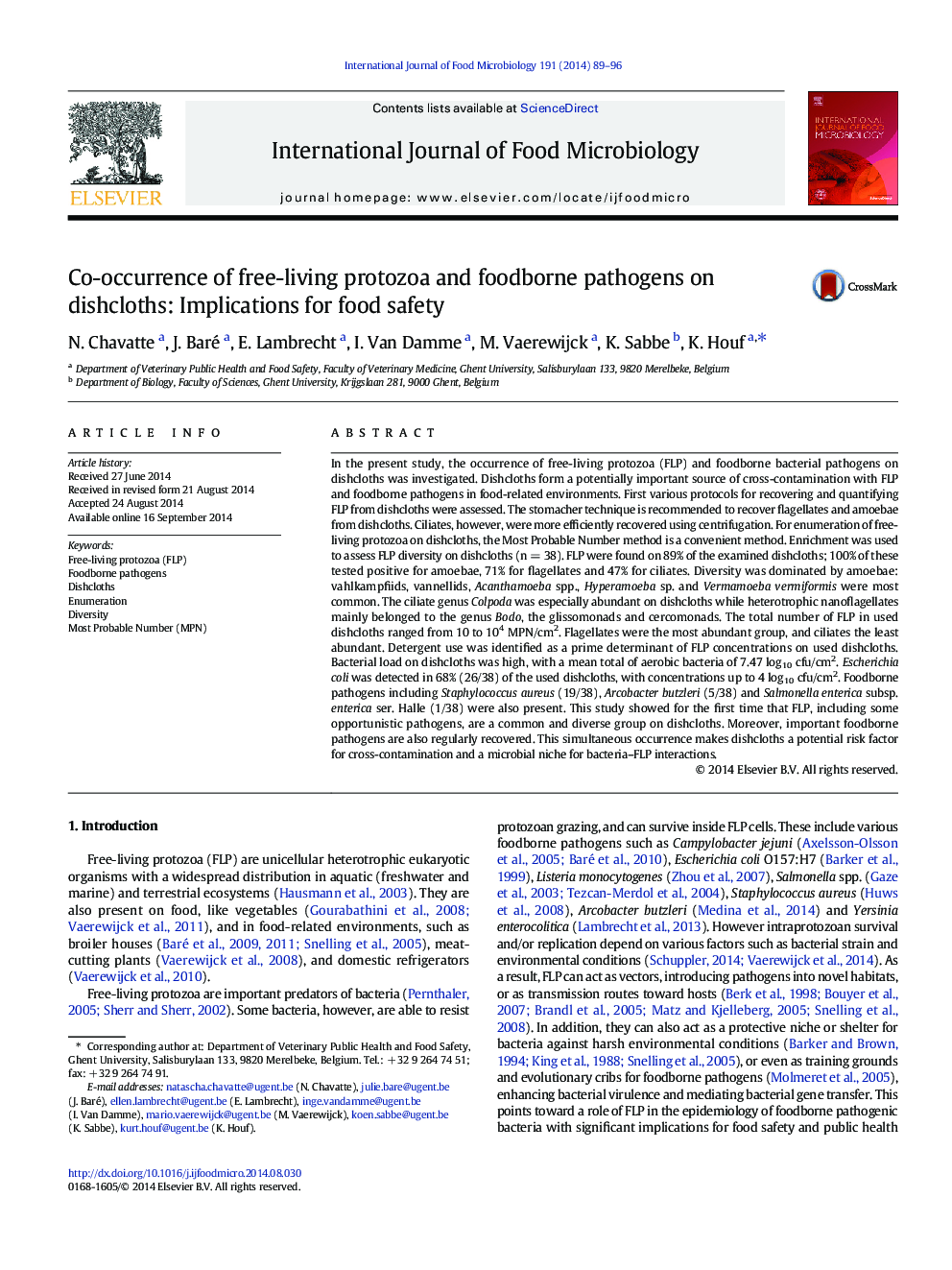| کد مقاله | کد نشریه | سال انتشار | مقاله انگلیسی | نسخه تمام متن |
|---|---|---|---|---|
| 4366725 | 1616592 | 2014 | 8 صفحه PDF | دانلود رایگان |
• First study showing that free-living protozoa (FLP), including opportunistic pathogens, are commonly present on dishcloths.
• The stomacher protocol followed by the Most Probable Number (MPN) method is recommended for estimating the number of FLP.
• The estimated FLP numbers on dishcloths range from 10 to 104 MPN/cm2.
• Co-occurrence of FLP and foodborne pathogens on dishcloths is confirmed.
• For the first time protocols for recovering and quantifying FLP from dishcloths are developed and evaluated.
In the present study, the occurrence of free-living protozoa (FLP) and foodborne bacterial pathogens on dishcloths was investigated. Dishcloths form a potentially important source of cross-contamination with FLP and foodborne pathogens in food-related environments. First various protocols for recovering and quantifying FLP from dishcloths were assessed. The stomacher technique is recommended to recover flagellates and amoebae from dishcloths. Ciliates, however, were more efficiently recovered using centrifugation. For enumeration of free-living protozoa on dishcloths, the Most Probable Number method is a convenient method. Enrichment was used to assess FLP diversity on dishcloths (n = 38). FLP were found on 89% of the examined dishcloths; 100% of these tested positive for amoebae, 71% for flagellates and 47% for ciliates. Diversity was dominated by amoebae: vahlkampfiids, vannellids, Acanthamoeba spp., Hyperamoeba sp. and Vermamoeba vermiformis were most common. The ciliate genus Colpoda was especially abundant on dishcloths while heterotrophic nanoflagellates mainly belonged to the genus Bodo, the glissomonads and cercomonads. The total number of FLP in used dishcloths ranged from 10 to 104 MPN/cm2. Flagellates were the most abundant group, and ciliates the least abundant. Detergent use was identified as a prime determinant of FLP concentrations on used dishcloths. Bacterial load on dishcloths was high, with a mean total of aerobic bacteria of 7.47 log10 cfu/cm2. Escherichia coli was detected in 68% (26/38) of the used dishcloths, with concentrations up to 4 log10 cfu/cm2. Foodborne pathogens including Staphylococcus aureus (19/38), Arcobacter butzleri (5/38) and Salmonella enterica subsp. enterica ser. Halle (1/38) were also present. This study showed for the first time that FLP, including some opportunistic pathogens, are a common and diverse group on dishcloths. Moreover, important foodborne pathogens are also regularly recovered. This simultaneous occurrence makes dishcloths a potential risk factor for cross-contamination and a microbial niche for bacteria–FLP interactions.
Journal: International Journal of Food Microbiology - Volume 191, 17 November 2014, Pages 89–96
